Illuminism and the master plan for world domination: he Federal Reserve System Begins Operation
Col. House, who Wilson called his “alter ego,” because he was his closest friend and most trusted advisor, anonymously wrote a novel in 1912 called Philip Dru: Administrator, which revealed the manner in which Wilson was controlled.
House, who lobbied for the implementation of central banking, would now turn his attention towards a graduated income tax.
Incidentally, a central bank providing inflatable currency and a graduated income tax were two of the ten points in the Communist Manifesto for socializing a country.
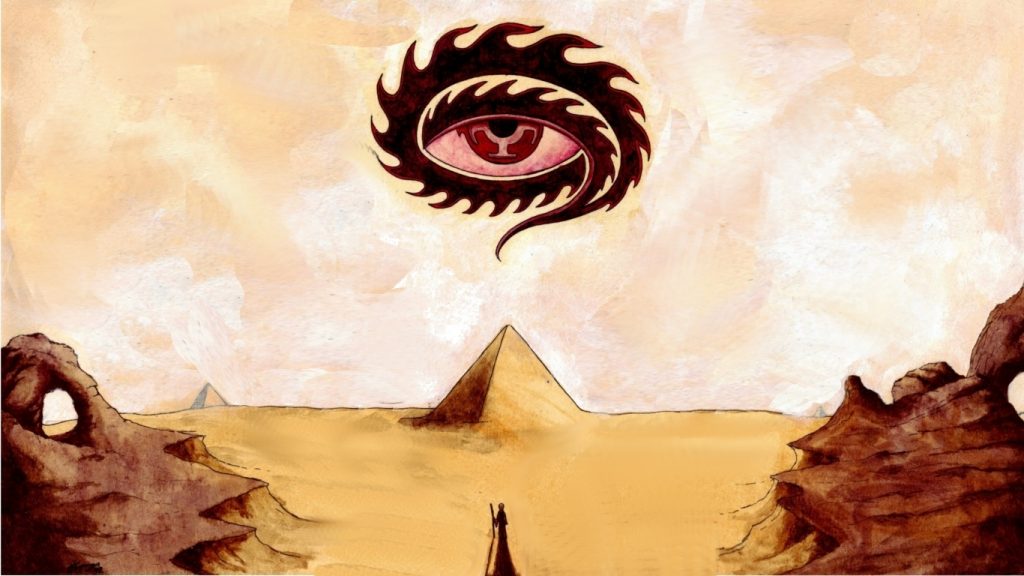
It was House who hand-picked the first Federal Reserve Board. He named Benjamin Strong as its first Chairman. In 1914, Paul M. Warburg quit his $500,000 a year job at Kuhn, Loeb and Co. to be on the Board, later resigning in 1918 during World War I because of his German connections.
The Banking Act of 1935 amended the Federal Reserve Act, changing its name to the Federal Reserve System, and reorganizing it in respect to the number of directors and length of term.
Headed by a seven member Board of Governors appointed by the President and confirmed by the Senate for a 14 year term, the Board acts as an overseer to the nation’s money supply and banking system.
The Board of Governors, the President of the Federal Reserve Bank of New York, and four other Reserve Bank Presidents who serve on a rotating basis make up the “Federal Open Market Committee”.
This group decides whether or not to buy and sell government securities on the open market. The Government buys and sells government securities, mostly through 21 Wall Street bond dealers, to create reserves to make the money needed to run the government.
The Committee also determines the supply of money available to the nation’s banks and consumers.
There are twelve Federal Reserve Banks in twelve districts:
- Boston (MA)
- Cleveland (OH)
- New York (NY)
- Philadelphia (PA)
- Richmond (VA)
- Atlanta (GA)
- Chicago (IL)
- St. Louis (MO)
- Minneapolis (MN)
- Kansas City (KS)
- San Francisco (CA)
- Dallas (TX)
The twelve regional banks were set up so that the people wouldn’t think that the Federal Reserve was controlled from New York.
Each of the Banks has nine men on [its] Board of Directors; six are elected by member Banks, and three are appointed by the Board of Governors.
They have 25 branch Banks, and many member Banks. All Federal Banks are members and four out of every ten commercial banks are members.
In whole, the Federal Reserve System controls about 70% of the country’s bank deposits. Ohio Senator, Warren G. Harding, who was elected to the Presidency in 1920, said in a 1921 Congressional inquiry that the Reserve was a private banking monopoly.
He said:
“The Federal Reserve Bank is an institution owned by the stockholding member banks. The Government has not a dollar’s worth of stock in it.”
His term was cut short in 1923 when he mysteriously died, leading to rumors that he was poisoned. This claim was never substantiated because his wife would not allow an autopsy.
Three years after the initiation of the Federal Reserve, Woodrow Wilson said:
“The growth of the nation… and all our activities are in the hands of a few men… We have come to be one of the worst ruled; one of the most completely controlled and dominated governments in the civilized world… no longer a government of free opinion, no longer a government by conviction and the free vote of the majority, but a government by the opinion and duress of a small group of dominant men.”
In 1919, John Maynard Keynes, later an advisor to Franklin D. Roosevelt, wrote in his book The Economic Consequences of Peace:
“Lenin is to have declared that the best way to destroy the capitalist system was to debauch the currency… By a continuing process of inflation, governments can confiscate secretly and unobserved, an important part of the wealth of their citizens…
“As the inflation proceeds and the real value of the currency fluctuates wildly from month to month, all permanent relations between debtors and creditors, which form the ultimate foundation of capitalism, become so utterly disordered as to be almost meaningless…”
Congressman Charles August Lindbergh, Sr., father of the historic aviator, said on the floor of the Congress:
“This Act establishes the most gigantic trust on Earth… When the President signs this Act, the invisible government by the Money Power, proven to exist by the Money Trust investigation, will be legalized…
This is the Aldrich Bill in disguise… The new law will create inflation whenever the Trusts want inflation… From now on, depressions will be scientifically created… The worst legislative crime of the ages is perpetrated by this banking and currency bill.”
On June 10, 1932, Louis T. McFadden, said in an address to the Congress:
“We have in this country one of the most corrupt institutions the world has ever known. I refer to the Federal Reserve Board and the Federal Reserve Banks… Some people think the Federal Reserve Banks are United States Government institutions.
They are not Government institutions. They are private credit monopolies which prey upon the people of the United States for the benefit of themselves and their foreign customers…
The Federal Reserve Banks are the agents of the foreign central banks… In that dark crew of financial pirates, there are those who would cut a man’s throat to get a dollar out of his pocket…
Every effort has been made by the Federal Reserve Board to conceal its powers, but the truth is the Fed has usurped the government. It controls everything here (in Congress) and controls all our foreign relations. It makes and breaks governments at will… When the Fed was passed, the people of the United States did not perceive that a world system was being set up here…
A super-state controlled by international bankers, and international industrialists acting together to enslave the world for their own pleasure!”
On May 23, 1933, Louis T. McFadden brought impeachment charges against the members of the Federal Reserve:
“Whereas I charge them jointly and severally with having brought about a repudiation of the national currency of the United States in order that the gold value of said currency might be given to private interests…
I charge them… with having arbitrarily and unlawfully taken over $80,000,000,000 from the United States Government in the year 1928…
I charge them… with having arbitrarily and unlawfully raised and lowered the rates on money… increased and diminished the volume of currency in circulation for the benefit of private interests…
I charge them… with having brought about the decline of prices on the New York Stock Exchange…
I charge them… with having conspired to transfer to foreigners and international money lenders, title to and control of the financial resources of the United States …
I charge them… with having published false and misleading propaganda intended to deceive the American people and to cause the United States to lose its independence…
I charge them… with the crime of having treasonably conspired and acted against the peace and security of the United States, and with having treasonably conspired to destroy the constitutional government of the United States .”
In 1933, Vice-President John Garner, when referring to the international bankers, said:
“You see, gentlemen, who owns the United States.”
Sen. Barry Goldwater wrote in his book With No Apologies:
“Does it not seem strange to you that these men just happened to be CFR (Council on Foreign Relations) and just happened to be on the Board of Governors of the Federal Reserve, that absolutely controls the money and interest rates of this great country. A privately owned organization… which has absolutely nothing to do with the United States of America!”
Plain and simple, the Federal Reserve is not part of the Federal Government. It is a privately held corporation owned by stockholders.
That is why the Federal Reserve Bank of New York (and all the others) is listed in the Dun and Bradstreet Reference Book of American Business (Northeast, Region 1, Manhattan/Bronx).
According to Article I, Section 8 of the U.S. Constitution, only Congress has the right to issue money and regulate its value, so it is illegal for private interests to do so.
Yet, it happened, and because of a provision in the Act, the ‘Class A’ stockholders were to be kept a secret and not to be revealed.
R.F. McMaster, who published a newsletter called The Reaper, through his Swiss and Saudi Arabian contacts, was able to find out which banks held a controlling interest in the Reserve.
These interests control the Federal Reserve through about 300 stockholders:
- Rothschild Banks of London and Berlin
- Lazard Brothers Bank of Paris
- Israel Moses Seif Bank of Italy
- Warburg Bank of Hamburg and Amsterdam
- Lehman Brothers Bank of New York
- Kuhn, Loeb and Co. of New York
- Chase Manhattan Bank of New York
- Goldman, Sachs of New York
Because of the way the Reserve was organized, whoever controls the Federal Reserve Bank of New York controls the system, About 90 of the 100 largest banks are in this district.
Of the reportedly 203,053 shares of the New York bank:
- Rockefeller’s National City Bank had 30,000 shares
- Morgan’s First National Bank had 15,000 shares
- Chase National Bank had 6,000 shares
- National Bank of Commerce (Morgan Guaranty Trust) had 21,000 shares.
A June 15, 1978 Senate Report called “Interlocking Directorates Among the Major U.S. Corporations” revealed that five New York banks had 470 interlocking directorates with 130 major U.S. corporations:
- Citicorp (97)
- J.P. Morgan Co. (99)
- Chase Manhattan (89)
- Manufacturers Hanover (89)
- Chemical Bank (96)
According to Eustace Mullins, these banks are major stock holders in the Fed. In his book World Order, he said that these five banks are “controlled from London”.
Mullins said:
“Besides its controlling interest in the Federal Reserve Bank of New York, the Rothschilds had developed important financial interests in other parts of the United States… The entire Rockefeller empire was financed by the Rothschilds.”
A May, 1976 report of the House Banking and Currency Committee indicated:
“The Rothschild banks are affiliated with Manufacturers Hanover of London in which they hold 20 percent… and Manufacturers Hanover Trust of New York”.
The Report also revealed that Rothschild Intercontinental Bank, Ltd., which consisted of Rothschild banks in London, France, Belgium, New York, and Amsterdam, had three American subsidiaries: National City Bank of Cleveland, First City National Bank of Houston, and Seattle First National Bank.
It is believed that the Rothschilds hold 53% of the stock of the U.S. Federal Reserve.
Each year, billions of dollars are “earned” by Class A stockholders from U.S. tax dollars which go to the Fed to pay interest on bank loans.
The Federal Reserve Cartel: The Rothschild, Rockefeller and Morgan Families
How U.S. Gold Reserves Were Stolen
The Coinage Act of 1792 established a dollar consisting of 371.25 grains of pure silver, but was later replaced with a gold dollar consisting of 25.8 grains of gold.
In 1873, the Coinage Act was passed, prohibiting the use of Silver as a form of currency, because the quantity being discovered was driving the value down.
In 1875, after temporarily suspending gold convertibility during the Civil War “greenback” period, the U.S. was put more firmly on the gold standard by the Gold Standard Act of 1900.
From 1900 to 1933, gold was coined by the U.S. Mint, and our paper currency was tied into the amount of gold held in the U.S. Treasury reserves.
In July, 1927, the directors of the Bank of England [Montagu Norman], the New York Federal Reserve Bank [Benjamin Strong], and the German Reichsbank [Hjalmar Schacht], met to plan a way to get the gold moved out of the United States, and it was this movement of gold which helped trigger the depression.
By 1928, nearly $500 million in gold was transferred to Europe.
President Franklin D. Roosevelt accepted the advice of England ‘s leading economist, John Maynard Keynes (1883-1946), a member of the Illuminati [also a socialist and a homosexual – ed], who said that deficit spending would be a shot in the arm to the economy.
Most of the New Deal spending programs to fight economic depression, were based on Keynes theories on deficit spending, and financed by borrowing against future taxes.
In 1910, Lenin said:
“The surest way to overthrow an established social order is to debauch its currency.”
Nine years later, Keynes wrote:
“Lenin was certainly right, there is no more positive, or subtler, no surer means of overturning the existing basis of society than to debauch the currency…
“The process engages all of the hidden forces of economic law on the side of destruction, and does it in a manner that not one man in a million is able to diagnose.”
A Presidential Executive Order by Roosevelt on April 5, 1933, required all the people to exchange their gold coins, gold bullion, and gold-backed currency for money that was not redeemable in precious metals.
The Gold Reserve Act of 1934, known as the Thomas Amendment which amended the Act of May 12, 1933, made it illegal to possess any gold currency (which was [finally] rescinded December 31, 1974).
Gold coinage was withdrawn from circulation and kept in the form of bullion. Just as the public was to return all their gold to the U.S. Government, so was the Federal Reserve.
However, while the people received $20.67 per ounce in paper money issued by the Federal Reserve, the Reserve was paid in Gold Certificates. Now the Federal Reserve and the Illuminati had control of all the gold in the country.
In 1934, the value of gold [was increased by FDR] to $35 an ounce, which produced a $3 billion profit for the Government. But when the price of gold increases, the value of the dollar decreases.
Our dollar has not been worth 100 cents since 1933, when we were taken off of the Gold Standard. In 1974, our dollar was worth 38 cents, and in 1983 it was only worth 22 cents. In 2002, it took $13.88 to buy what cost $1.00 in 1933.
Since our money supply had been limited to the amount of gold in Treasury reserves, when the value of the dollar decreased, more money was printed.
The Bretton Woods Monetary Conference (1944)
The first United Nations Monetary and Financial Conference, held in Bretton Woods, New Hampshire, from July 1 to July 22, 1944, which was under the direction of Harry Dexter White (CFR member, and undercover Russian spy), established the policies of the International Monetary Fund.
Its goals were to strip the United States of its gold reserves by giving it to other nations, and to merge with their industrial capabilities as well as their economic, social, educational and religious policies to facilitate a one-world government.
Because of paying off foreign obligations and strengthening foreign economies, between 1958 and 1968, the amount of gold bullion in the possession of the U.S. Treasury dropped by 52%.
Of the amount remaining, $12 billion was reserved by law for backing the paper money in circulation. Our money had been backed by a 25% gold reserve in accordance to a law that was passed in 1945, but it was rescinded in 1968.
The amount of gold slipped from 653.1 million troy ounces in 1957, to 311.2 million ounces in 1968, which according to the Treasury Department, was due to sales to foreign banking institutions, sales to domestic producers, and the buying and selling of gold on the world market to stabilize prices. This was a loss of 341.9 million troy ounces.
In August, 1971, gold was used only for world trade, because foreign countries wouldn’t accept U.S. dollars. As of November, 1981, sources had indicated that the gold reserve had dropped to 264.1 million troy ounces.
Title 31 of the U.S. Code, requires an annual physical inventory of our gold supply, but a complete audit was never done, so officially, nobody knows what has occurred. After World War II, America had 70% of the World’s supply of loose gold, but today, we may have less than 7%.
Sen. Jesse Helms seemed to think that the OPEC nations have our gold, while others believe that 70% of the world’s gold supply is being held by the World Bank, which is dominated by the financial grip of the Rothschilds and the Rockefellers.
Some years ago, I had been contacted by a gentleman in Michigan whose research indicated that counterfeit $5,000 and $10,000 Federal Reserve Notes had been used to steal U.S. gold reserves.
Illegal to own, these notes are actually checks which are used to transfer ownership of large amounts of gold without actually moving the gold itself.
Using public records, he found the serial numbers of the bills which were originally printed and discovered that there are now more in existence.
It has been reported that 40% (13,000 tons) of the world’s gold is five levels below street level in a sub-basement of the New York Federal Reserve Bank, behind a 90-ton revolving door. Some of it is American-owned, but most is owned by the central banks of other countries.
It is stored in separate cubicles, and from time to time, is moved from one cubicle to another to satisfy international transactions.
The Destructive Effects of Fiat Money Inflation
The 1929 series of Federal Reserve notes said:
“Redeemable in gold on demand at the United States Treasury, or in gold or lawful money at any Federal Reserve Bank.”
This was just like the Silver Certificate, which was guaranteed by a dollar in silver that was on deposit.
The 1934 series of notes said:
“This note is legal tender for all debts, public and private, and is redeemable in lawful money at the United States Treasury, or at any Federal Reserve Bank.”
The 1950 series:
Kept the same wording, but reduced it to three lines, and reduced the size of the type.
The 1953 series:
The wording was totally removed, although the bottom portion contained a promise to “pay the bearer on demand.”
The 1963 series:
Even this wording was removed, and our dollars became nothing more than worthless pieces of paper because they no longer met the legal requirements of a note, which must list an issuing bank, and amount payable, a payee or “bearer,” and a time for payment or “on demand.”
After March, 1964, silver certificates were no longer convertible to silver dollars; and in March, 1968, near the conclusion of the Johnson Administration, silver backing of the dollar was removed.
Since 1933, the Federal Reserve has been printing too much money, compared to the declining Gross National Product (GNP). The GNP is the accumulated values of services and goods produced in the country.
If the GNP is 4%, then the money produced should only be about 5-6%, thus insuring enough money to keep the goods produced by the GNP in circulation.
Additional social services, which are promised during election year rhetoric to gain votes, increase the Federal Budget, so more money is printed. Then the Government will cut the Budget, establish wage and price controls.
The extra money in circulation decreases the value of the dollar, and prices go up. Simply put, too much money in circulation causes inflation, and that is what the Reserve is doing, purposely printing too much money in order to destroy the economy.
On the other hand, if they would stop printing money, our economy would collapse.
The Federal Reserve is responsible for setting the interest rate that member banks can borrow from the Reserve, thus controlling the interest rates of the entire country.
So, what it boils down to is that the Federal Reserve determines the amount of money needed, which is created by the International Bankers out of nothing. Besides the face value, they charge the government 3¢ to produce each bill.
The Federal government pays the Reserve in bonds (which are also printed by the Reserve), and then pay the bonds off at a high rate of interest. That interest will very soon become the largest item in the Federal Budget.
William McChesney Martin, a member of the Council on Foreign Relations (CFR), and Chairman of the Federal Reserve during the “New Frontier” years of the Kennedy Administration, testified to the Federal Banking Committee that the value of the dollar was being scientifically brought down each year by 3% to 3.5% in order to allow wages to “go up”.
The reasoning behind this was that the people were being made to think that they were getting more when in fact they were actually getting less.
The Congress has also contributed to this process by approving Federal Budgets year after year which requires the printing of more money to finance the debt, which by the end of 2003 was over $6,900,000,000,000 ($6.9 trillion).
When Wilson was President, the debt was about $1 billion and in 1974, the debt was about $1 trillion [a thousand-fold increase in only 60 years – ed].
Congressional Attempts to Control the Fed
In 1937, Rep. Charles G. Binderup of Nebraska, realizing the consequences of the Federal Reserve System, called for the Government to buy all the stock, and to create a new Board controlled by Congress to regulate the value of the currency and the volume of bank deposits, thus eliminating the Fed’s independence.
He was defeated for re-election.
Others have also tried to introduce various Bills to control the Federal Reserve:
- Rep. Goldborough (1935)
- Rep. Jerry Voorhis of California (1940, 1943)
- Sen. M. M. Logan of Kentucky
- Rep. Usher L. Burdick of North Dakota
Rep. Wright Patman of Texas (who was the House Banking Chairman until 1975), said in 1952:
“In fact there has never been an independent audit of either the twelve banks of the Federal Reserve Board that has been filed with the Congress… For 40 years the system, while freely using the money of the government, has not made a proper accounting.”
Patman said that the Federal Open Market Committee (who, in addition to the Board of Governors, decides the country’s monetary policy) is,
“one of the most secret societies. These twelve men decide what happens in the economy… In making decisions they check with no one – not the President, not the Congress, not the people.”
Patman also said:
“In the United States we have, in effect, two governments… We have the duly constituted Government… Then we have an independent, uncontrolled and uncoordinated government in the Federal Reserve System, operating the money powers which are reserved to Congress by the Constitution.”
During his career, Patman sought to force the Fed to allow an independent audit, lessen the influence of the large banks, shorten the terms of the Fed Governors, expose it to regular Congressional review just like any other Federal agency, and to have only officials nominated by the President and confirmed by Congress to be on the Federal Open Market Committee.
In 1967, Patman tried to have them audited, and on January 22, 1971, introduced H.R. 11, which would have altered its organization, diminishing much of its power. He was later removed from the Chairmanship of the House Banking and Currency Committee, which he held for years.
On January 22, 1971, Rep. John R. Rarick of Louisiana introduced H.R. 351:
“To vest in the Government of the United States the full, absolute, complete, and unconditional ownership of the twelve Federal Reserve Banks.”
He said: “The Federal Reserve is not an agency of government. It is a private banking monopoly.”
He was later defeated for re-election.
During the 1980’s, Rep. Phil Crane of Illinois introduced House Resolution H.R. 70 that called for an annual audit of the Fed (which never came to a full vote), and Rep. Henry Gonzales of Texas introduced H.R. 1470, that called for the repeal of the Federal Reserve Act.
The Federal Reserve System has never been audited, and their meetings, and minutes of those meetings, are not open to the public. They have repelled all attempts to be audited.
In 1967, Arthur Burns, the Chairman of the Federal Reserve, said that an audit would threaten the “independence” of the Reserve.
The Fed in the 1970s and 1980s
In 1979, after dismissing Secretary of Treasury Michael Blumenthal, President Jimmy Carter offered the position to American Illuminati chief David Rockefeller, the CEO of Chase Manhattan Bank, but he turned it down [as he had previously turned down the offer from Nixon].
He also turned down the nomination for the Chairmanship of the Federal Reserve Board.
Carter then appointed Paul Volcker as Chairman. Volcker graduated from Princeton with a degree in Economics, and from Harvard with a degree in Public Administration.
He was,
- an economist with the Federal Reserve Bank of New York (1952-57)
- worked at the Chase Manhattan Bank (1957-61)
- was with the U.S. Treasury Department (1961-65)
- Deputy Under Secretary for Monetary Affairs (1963-65)
- Under Secretary for Monetary Affairs (1969-74)
- President of the New York Federal Reserve Bank (1975-79)
When Volcker was in the Nixon Administration as the Under Secretary for Monetary Policy and International Affairs, the executive branch official who works most closely with the Federal Reserve, he and Treasury Secretary John Connally helped formulate the policy that took us off the gold standard in 1971, because of the dwindling gold reserves at Fort Knox.
Volcker was chosen because he was the “candidate of Wall Street.” He was a member of the Trilateral Commission, and a major Rockefeller supporter.
Bert Lance, the Georgia banker and political advisor to Carter who became his Budget Director and was later forced to resign… said that if Volcker was appointed he would be “mortgaging his re-election to the Federal Reserve.”
Lance predicted that he would bring high interest rates and high unemployment. He was confirmed by the Senate Banking Committee in August, 1979, replacing Arthur Burns, an Austrian-born economist who was a CFR member with close ties to the Rockefellers.
Volcker was against a gold-backed dollar or gold being used as a form of currency. He attempted to tighten the money situation in order to curb the 10% annual growth in the money supply, and to ease the pressure of loan demand.
The result [of his policy] was a dramatic increase in interest rates, which climbed to 13.5% by September, 1979, and then soared to 21.5% by December, 1980.
[We may speculate] that this economic decline was purposely engineered to cause the political decline of Carter.
In response to the rising interest rates, Carter said:
“As you well know, I don’t have control over the Fed, none at all. It’s carefully isolated from any influence by the President or the Congress. This has been done for many generations and I think it’s a wise thing to do.”
During the 1970’s, many banks had left the Federal Reserve, and in December, 1979, Volcker told the House Banking Committee that “300 banks with deposits of $18.4 billion have quit the Fed within the past 4-1/2 years,” and that another 575 of the remaining 5,480 member banks, with deposits of $70 billion, had indicated that they intended to withdraw.
He said that this would curtail their control over the money supply, and that led Congress, in 1980, to pass the Monetary Control Act, which gave the Federal Reserve control of all banking institutions, regardless if they are members or not.
Even though inflation had skyrocketed to all-time highs, Reagan kept Volcker on. It was Volcker who started the collapse of the U.S. economy.
Alan Greenspan, who became the Chairman of the Federal Reserve Board in 1987, is [also] a member of the Council on Foreign Relations.
He has a bachelor’s and master’s degree, and a doctorate in Economics from New York University. He met Ayn Rand, the author of Atlas Shrugged, in 1952 and they became friends.
It is from her that he learned that capitalism “is not only efficient and practical, but also moral.”
In February, 1995, the seventh increase in the interest rate, within the period of a year, took place. This put Greenspan in the limelight, as well as the Federal Reserve.
It was very interesting how the media spin doctors churned out information that totally skirted the issue concerning the Fed’s actual role in controlling our economy.
Predictions of Monetary Disaster
In the mid-1970’s, Paper 447, Article 3, from the World Bank said that the world economy would be fairly stable until 1980 when it would begin falling, in domino fashion.
On October 29, 1975, the Wall Street Journal printed a comment by H. Johannes Witteveen, Managing Director of the United Nation’s International Monetary Fund, that the IMF “ought to evolve into a World Central Bank… to prevent inflation.”
Dr. H.A. Murkline, Director of the International Institute University in Irving, Texas, wrote in World Oil:
1976 that he projected that the Federal Government could only hold out till the end of 1981. Dow Theory Letters, Inc. reported that by 1982, the cost of dealing with the national debt “would eat up all the government tax money available.”
The Robbins Report of January 15, 1978, said:
“If Carter introduces Bancor, which will be the yielding of our dollar to the ECU (European Currency Unit), this is what will happen: look for hyperinflation and collapse of all the world’s paper money before 1985.”
Julian Snyder said in the International Money Line of February, 1978:
“The United States is trying to solve its problem through currency depreciation (debasement)… it will not work. If the crash does not occur this year, it could be postponed until 1982.”
On March 13, 1979, while meeting at Strasbourg, France, the Parliament of Europe, which governs the European Economic Community (Common Market), oversaw the establishment of a new European money system. Known as the ECU, it was backed by 20% of the participating countries” gold reserves (about 3,150 tons).
What little strength our dollar had, came from the fact that all nations buying oil from OPEC, had to use U.S. dollars.
Then came the word in March, 1980, from Arab diplomatic sources at the United Nations that the Chase Manhattan Bank was making plans to drop the dollar in [favor] of the ECU.
Dr. Franz Pick, a well known authority on world currency, said in December, 1979, in the Silver and Gold Report:
“The most serious problem we face today is the debasement of our currency by the government. The government will continue to debase the dollar until… within 12-24, months it will shrink to 1 cent… at which time Washington will be forced to create the new hard currency…
“A currency reform is nothing but a fancy name for state bankruptcy… A currency reform completes the expropriation of all kinds of savings… it will wipe out all public and private bonds, most pensions; all annuities, and all endowments.”
Against all odds, our economy has continued to hang on even though financial analysts have continued to forecast disastrous conditions.
In 1993, Sen. Bob Kerrey (Democrat, NE) promised to support President Bill Clinton’s Budget Plan, if Clinton would appoint a Committee to study the condition of the American economy.
The President established a 32-member bipartisan committee and in August, 1994, they issued their report.
According to the committee’s findings, by the year 2012, unless drastic changes are made, we won’t even be able to pay the interest on the national debt.
Knowing this, the federal government has allowed the trend to continue, almost as if they’re trying to run our economy into the ground.
It seems obvious that the destruction of the American economy has been part of a deliberate plot to financially enslave our nation.
The New U.S. Currency
In the late 1970’s, it was [rumored that replacement currency had] already been printed and stored at the Federal Emergency Relocation Facility in Culpepper, Virginia, which is built into the side of a mountain, and would be able to continue functioning during the aftermath of a nuclear or natural disaster.
And at the 200,000 sq. ft. Federal underground facility in Mt. Weather, Virginia (near Berryville), which is the primary relocation area for the President, Cabinet Secretaries, Supreme Court Justices, and several thousand federal employees (Congress would be relocated to an underground facility in White Sulphur Springs, West Virginia).
It is believed that when our monetary system is finally destroyed, a reorganization will occur within the confines of a world government, and new money will be issued.
Rep. Ron Paul, Republican from Texas, who was on the Committee on Banking, Finance and Urban Affairs, wrote about the new money in a [1983] letter to Charles T. Roberts, Executive Vice-President of the Hull State Bank in Texas:
“In a closed briefing for the members of the House Banking Committee on November 2nd, representatives of the Bureau of Engraving and Printing, the Federal Reserve, and the Secret Service described plans for making changes in Federal Reserve Notes beginning in 1985 (although the long range target is 1988)…
These changes, which will probably include taggents, security threads, and colors, and may include holograms, diffraction gratings, or watermarks, will be made in coordination with six other nations: Canada, Britain, Japan, Australia, West Germany and Switzerland.
Japan, for example, will begin recalling its present currency in November, 1984, and have it nearly completed within six months… According to the government, the only reason for the currency changes is to deter counterfeiting.
Although it was admitted by one spokesman in the group that there would have to be a call-in of our present currency for new currency to work, the spokesmen for the government were adamant in saying that there was no other motive for a currency change…”
According to law, only the Treasury Secretary has the authority to change the currency.
Over $3 million was spent under “counterfeit prevention” authority for the development of the new money, which according to the Currency Design Act (H.R. 6005) hearings, would be issued by the Federal Reserve Board. In a July, 1983 market survey in Buena Park, California, people were shown proposed designs for “new U.S. dollar bills.”
The variations shown, consisted of each denomination being a different color; Federal Reserve seals replaced with a design utilizing reflective ink; and other optical devices like holograms (a process which produces a three-dimensional image which can change color depending on the angle it is viewed), and multilayer diffraction gratings (similar to a hologram); as well as bills containing metal security threads, and planchettes (red and blue colored discs incorporated into the paper, similar to threads) to trigger scanning equipment which would detect its presence, and to sort cash faster.
By the end of 1983, [the Fed] had received 110 new machines which could count up to 72,000 bills per minute each.
Jane Kettleson, an economic consultant to the U.S. Paper Exchange, said that,
“the Fed will have the capability to physically replace the entire U.S. currency in circulation in just four days time.”
It was shown that a drastic change would not be accepted, so a process of incrementalism was adopted.
It was decided that the Bureau of Printing and Engraving would have a fine metallic strip running through the currency, leaving the basic design intact; however, they later decided to use a clear imprinted polyester strip, woven into the paper, running vertically on the left side of the Federal Reserve Seal.
The length of the translucent polyester filament reads “USA100” for $100 bills, “USA50” for $50 bills, and so on; and can only be read if held up to direct light.
It was reported that a company called Checkmate Electronics, Inc., which manufactures the equipment needed to scan checks, scanned the new money, and found the strip to contain “machine detectable” aluminum. Their scan produced an indecipherable bar code.
Though the basic design did not change, there was microscopic type printed around the picture which reads, “The United States of America,” but appeared to only be a line.
This currency with oversized, off-center portraits, was introduced in 1996 with the $100 bills, then $50 bills and $20 bills (1998), and culminated with $10’s and $5’s in 2000.
The Government discontinued printing any of the old money, and began emptying their vaults to get rid of the old bills. The old money was never recalled, and continued to be circulated.
Then in June, 2002, only a few years after the last makeover, the rumors of colored money became a fact, as the Bureau of Engraving and Printing announced that further changes were being made to our money for security reasons. In October, 2003, the new, colored $20 bill (the most counterfeited note), was introduced.
The new bill retained the security thread, color-shifting ink, and watermark; but also had the colors of green and peach added to its background, as well as small yellow “20’s” printed on the back. The new $50 and $100 bills will be coming in 2004 and 2005.
Some financial experts have theorized that when every denomination is changed over, that the business sector may not want to accept old bills which would then become worthless and could create a financial emergency.
But Federal officials have said that the old money would be accepted, but scrutinized.
It has been suggested that the government could really take advantage of the situation, that in order for people to exchange their old money for new, an exchange rate may be determined which would benefit the economy.
For example, it may take two old dollars to exchange for a new one.
It is possible that we may be experiencing the final transition to the “new money.” [snip]
Worldwide Currency Changes
International cooperation has been intense to coordinate currency changes among its member governments.
In 1985, officials from the Morgan Bank in New York met with the Credit Lyonnais Bank in France.
They established the European Currency Unit Banking Association (ECUBA), to get world cooperation for a unified currency, and had support from bankers in Europe, Japan, and the United States.
It was an offshoot of the Banking Federation of the European Community (BFEC), which has been engaged in shutting down small banks in order to develop a conglomerate of a few huge banks.
In October, 1987, the Association for the Monetary Union of Europe (AMUE) secretly met and recommended that the ECU (European Currency Unit) replace existing national currencies and that all European Central Banks be combined into one and issue the ECU [Euro] as the official unified currency (which occurred on schedule in the year 2000).
It is believed that the plan is to [ultimately] have only three central banks in the world: The [U.S.] Federal Reserve Bank, the European Central Bank, and the Central Bank of Japan.
In a June, 1989 hearing of the Senate Banking Securities Subcommittee, Alan Greenspan, Chairman of the Federal Reserve, said that exchange rates could be fixed in order to solve the problem of uniformity between the currencies of various nations.
Many countries have issued new money, such as Switzerland, the United Kingdom, Japan, Canada, France, Germany, Australia, and Brazil.
Of the countries that already had, most currencies had a common 1″ square, usually on the left side of the bill.
Held over a light, a hologram appears on the spot, barely visible to the naked eye, which cannot be reproduced on a copier. It is believed that this spot is being reserved for a central World Bank overprint.
They also contain metallic strips that can be detected when they pass through scanners at airports and international borders. [snip]
The institution of a common world-wide currency may be delayed because of the possibility of moving right to a cashless system, making paper money obsolete.
The Visa MagiCard was the first step towards a national debit card. With this card, you could make purchases at any of the 10 million merchants who accepted Visa, and have the amount electronically deducted from your checking account.
Financial experts said at the time, that within only a few years, there would be more debit cards than credit cards.
Since then, there has been a massive campaign to promote debit cards, and a move to accommodate their use in all areas of life.
More and more banks have decided not to return people’s cancelled checks, because of the expense to do so; and it seems likely that there is a plan underway to gradually move away from the use of paper checks.
With the existence of debit cards, and the fact that credit cards are so easily attainable, there’s no doubt that we’re being pushed into an electronic economy of Direct Deposit and Automatic Withdrawal. When total saturation has been achieved, then the stage will be set.
Sure, it’s really convenient to whip out a piece of plastic to buy things, and to have all your financial affairs handled through the bank’s computer system. But do you realize, that when their plan is complete, you will be nothing more than a number in a computer.
Everything you do can be tracked; and with a click of a mouse, or the press of a button, you could be denied access to your own money.
Conclusion
In a letter to Edward M. House (President Wilson’s closest aide), dated November 23, 1933, Franklin D. Roosevelt said:
“The real truth of the matter is, and you and I know, that a financial element in the large centers has owned the government of the U.S. since the days of Andrew Jackson.”
Henry Ford, founder of the Ford Motor Company, said:
“It is well enough that the people of the nation do not understand our banking and monetary system, for if they did, I believe there would be a revolution before tomorrow morning.”
In 1957, Sen. George W. Malone of Nevada said before Congress about the Federal Reserve:
“I believe that if the people of this nation fully understood what Congress has done to them over the past 49 years, they would move on Washington: they would not wait for an election… It adds up to a preconceived plan to destroy the economic and social independence of the United States.” — from http://100777.com/doc/17
The real owners of the Federal Reserve and the Federal Reserve System are:
- Rothschild Banks of London and Berlin
- Lazard Brothers Bank of Paris
- Israel Moses Seif Banks of Italy
- Warburg Bank of Hamburg and Amsterdam
- Lehman Brothers Bank of New York
- Kuhn, Loeb Bank of New York
- Chase Manhattan Bank of New York
- Goldman Sachs Bank of New York
Complete List of BANKS Owned or Controlled by the Rothschild Family
Approximately three hundred people, known to each other and/or relations of the “owners,” who hold stock in the Federal Reserve System. They comprise an interlocking, International Banking Cartel of wealth beyond comprehension.
The Federal Reserve meet behind closed doors and has more power than the Congress and President of the United States.
And to top that off, these men who control America through their financial manipulation are not even responsible to the public nor to Congress and has repeatedly shown that it is under the control of the International Jewish Bankers, by raising the discount rate (a deliberate act to destroy small business) they have been able to bring about the depressions which have devastated the American Farmer and Ranchers since the time this Evil Satanic Act was passed.
From ModernHistoryProject Website, recovered through WayBackMachine Website
Disclaimer: We at Prepare for Change (PFC) bring you information that is not offered by the mainstream news, and therefore may seem controversial. The opinions, views, statements, and/or information we present are not necessarily promoted, endorsed, espoused, or agreed to by Prepare for Change, its leadership Council, members, those who work with PFC, or those who read its content. However, they are hopefully provocative. Please use discernment! Use logical thinking, your own intuition and your own connection with Source, Spirit and Natural Laws to help you determine what is true and what is not. By sharing information and seeding dialogue, it is our goal to raise consciousness and awareness of higher truths to free us from enslavement of the matrix in this material realm.
 EN
EN FR
FR

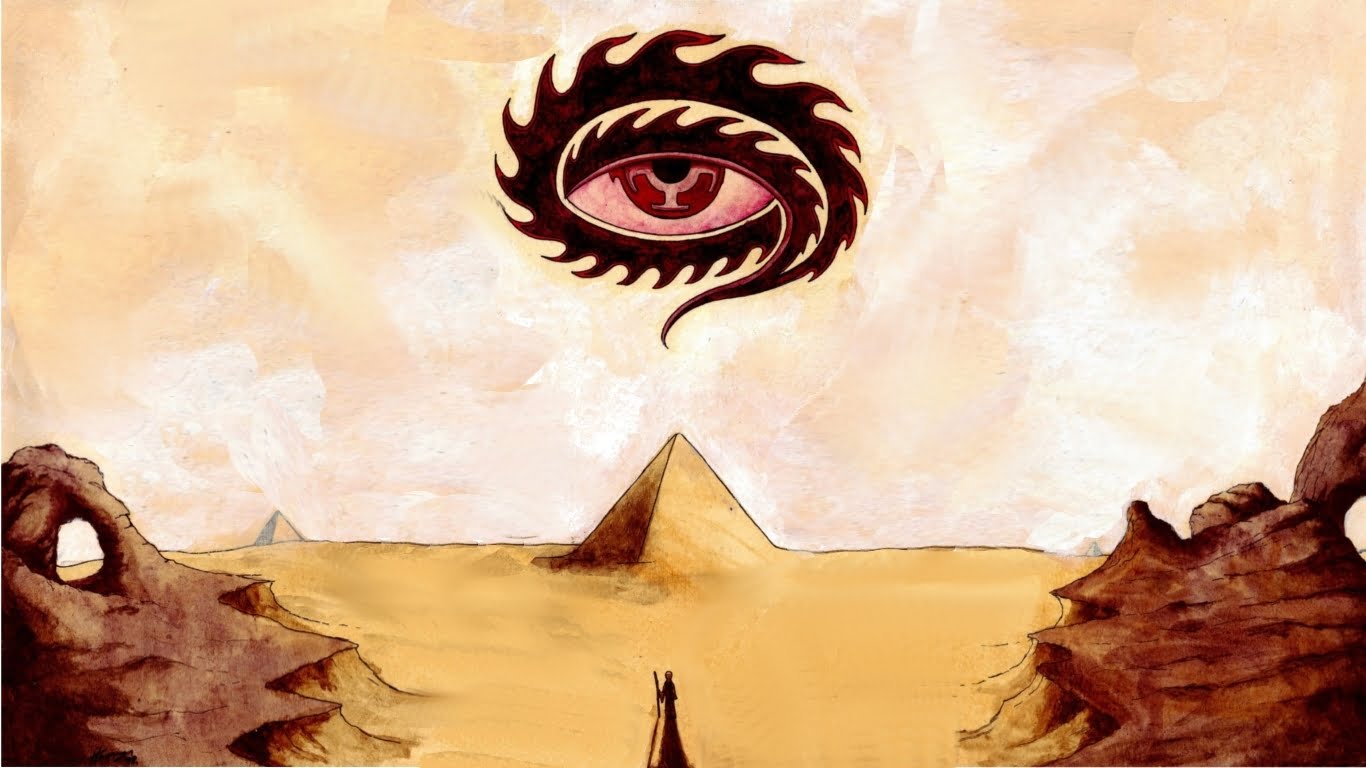







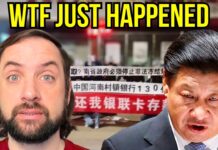

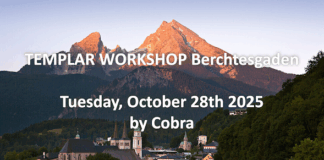
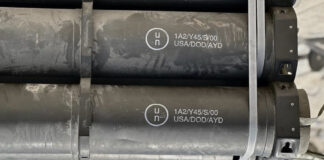
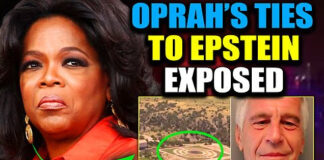
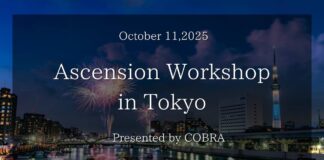
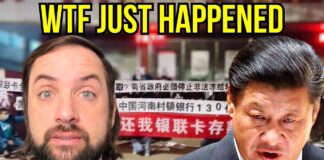












Being born into a eorld of overpopulation and mass manipulation. What is their to achieve in trying to stop maniacs so power hungry they will destroy our world to control the wealth. I think we can only change by returning to the barter system. Which means no technology. Cant see yhat happening.
As soon as the video with English subtitles I’m working on is ready for publication and as soon as I receive the link, I’ll post it in the coeo.cc page. Or send it as a contribution to the team of PFC that is posting articles on the home site. That is, if it’s not yet gone viral before I receive it.
It doesn’t really matter where this video pops up, the information offered is one of the keys to the disclosure of the financial system on planet Earth. Once the average Joes and Marys really begin to “get it”, we as humanity, all the Joes and Marys, are ready and can begin to overthrow this enslavement-system and stop buying it, pun intended.
Peace be with you and with planet Earth. Blessed be, Marian Baghor.
Alan Greenspan was the so-called expert conveniently working for the bankers/cabal, and with every word that came out of his mouth he commandeered the manipulation of the population. For me, it was like looking at the devil himself. I feel the same way when I listen to Dick Cheney, Henry Kissinger, the Clintons, the Bushes, Bill Gates, Barney Frank, Senator Byrd, the Rothschilds, the Rockefellers, etc. Too many to name, but these are the standouts. We cannot give up on trying to wake up everyone.